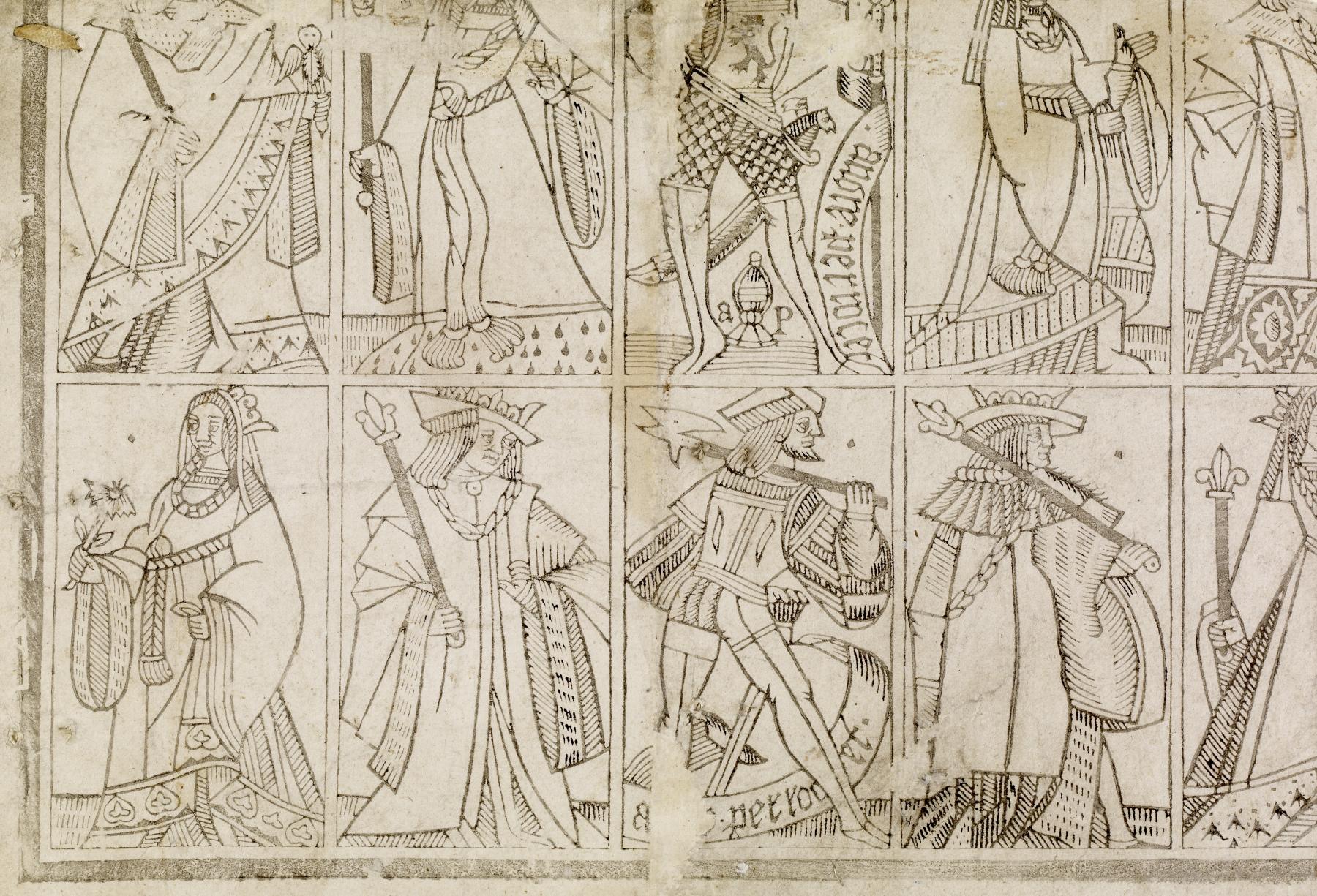Uncut Sheet of Printed Playing Cards
(Manuscripts and Rare Books)
Playing cards were invented in China 1,000 years ago but were unknown in Europe before the mid-14th century. It is believed that cards as we know them were introduced to Spain from North Africa when both areas were under Muslim control. French cards, such as those displayed here, are the closest visually to those we use today. These paper cards have yet to be cut and were never used, but the final product would have been fairly affordable.
Provenance
Provenance (from the French provenir, 'to come from/forth') is the chronology of the ownership, custody, or location of a historical object. Learn more about provenance at the Walters.
Dr. Richard Ettinghausen, Washington D.C. [date and mode of acquisition unknown]; Walters Art Museum, January 1959, by gift.
Exhibitions
| 2010 | Checkmate! Medieval People at Play. The Walters Art Museum, Baltimore. |
| 1990 | The Power of the Press: Revolution in Communications, 1450 - 1600. The Walters Art Gallery, Baltimore. |
| 1977-1978 | Splendor in Books. Grolier Club, New York; The Walters Art Gallery, Baltimore. |
Conservation
| Date | Description | Narrative |
|---|---|---|
| 8/8/1977 | Treatment | mounted |
Geographies
France, Lyon (Place of Origin)
Measurements
H: 11 1/8 x W: 8 1/4 in. (28.3 x 21 cm)
Credit Line
Gift of Dr. Richard Ettinghausen, 1959
Location in Museum
Not on view
Accession Number
In libraries, galleries, museums, and archives, an accession number is a unique identifier assigned to each object in the collection.
In libraries, galleries, museums, and archives, an accession number is a unique identifier assigned to each object in the collection.
93.36


